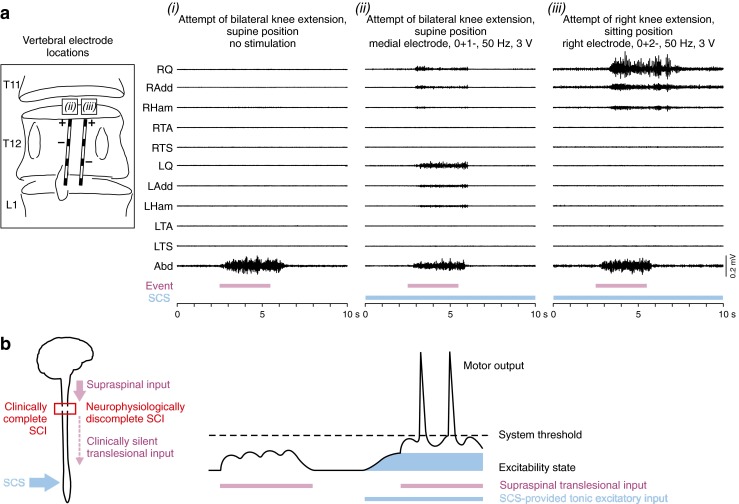Fig. 5.

Task-related motor output during attempts to voluntarily move paralyzed lower limbs enabled by spinal cord stimulation (SCS). (a) Electromyographic (EMG) activity during attempted bilateral knee extension while supine (i) without and (ii) with SCS, and (iii) right knee extension in the sitting position with SCS, as illustrated on the left. Stimulation was applied at the motor threshold of right quadriceps (RQ) and right adductor (RAdd) in (iii), and was otherwise below the motor threshold. Purple bars indicate periods of voluntary attempts; the EMG activity in the abdominal (Abd) muscles coincides with the patient’s effort. Blue bars indicate SCS application. SCS in itself did not induce muscle contraction or movement at the intensities applied. Q = quadriceps; Add = adductors; Ham = hamstrings; TA = tibialis anterior; TS = triceps surae of right (R) and left (L) side. Unpublished results of patient 1 in [29], classified as American Spinal Injury Association Impairment Scale (AIS) grade B (neurological level of injury: C6). (b) Simplified sketch of a possible explanation for the immediate enabling effect of SCS. SCS-provided excitatory input moves the central state of excitability closer to threshold and enables an otherwise ineffective supraspinal input to generate motor output. Sketch on the right side is adapted, with permission, from Fig. 35–8 in [87]
